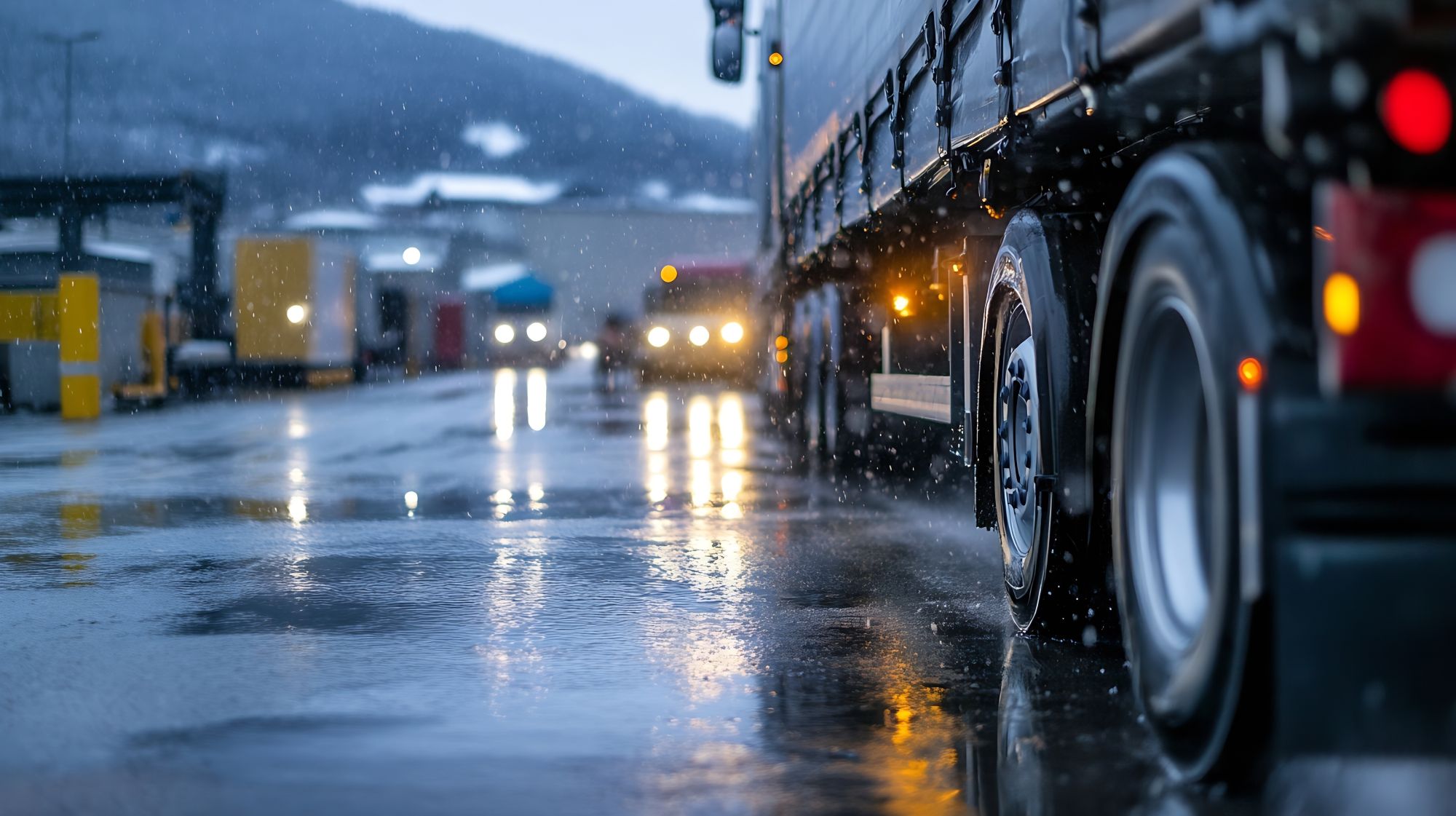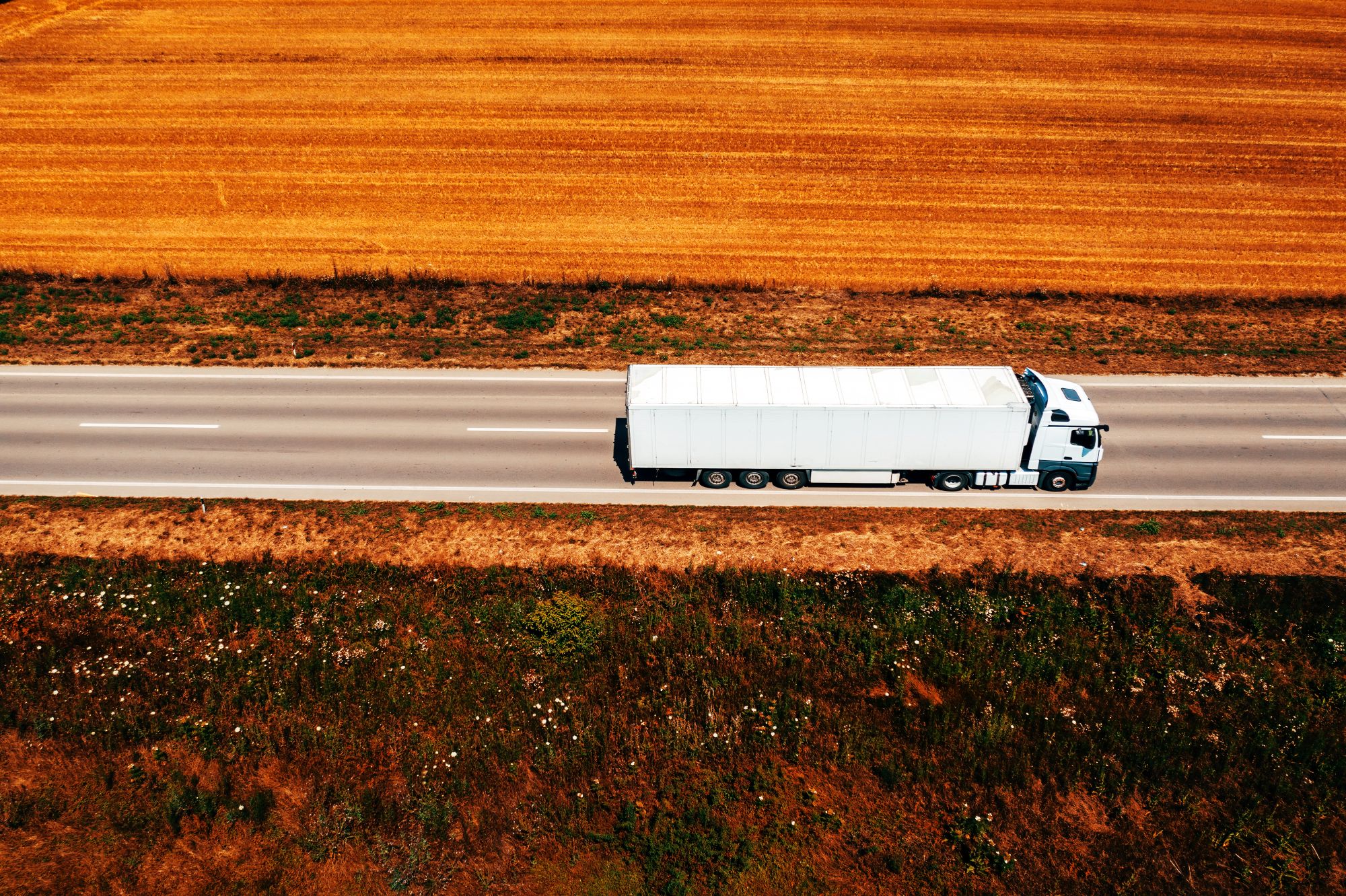
Guest
Як зміна клімату впливає на сектор мобільності
Створено: 21.07.2025
•
Оновлено: 21.07.2025
Зміна клімату більше не є віддаленою загрозою. Для тих, хто працює в автомобільному транспорті, це щоденна операційна реальність, яку з кожним роком стає все важче ігнорувати. Від спеки, що плавить асфальт, до повеней, що перекривають основні шляхи, - вплив мінливого клімату на перевезення вантажів неминуче позначається на бізнесі.
Для менеджерів автопарків це означає орієнтуватися в нормативних документах, що постійно змінюються, оновлювати інфраструктуру та переосмислювати планування безперервності роботи. Для водіїв це означає адаптацію до нових ризиків на дорозі - від розриву шин до порушення графіку доставки. А для всього сектору це означає необхідність більш стійкого підходу до мобільності, що враховує кліматичні зміни.
Погіршення погодних умов - операційна загроза
У липні 2022 року у Великій Британії був найспекотніший день за всю історію спостережень. Коли температура піднялася до 40℃, дороги почали розм'якшуватися, а ділянки автомагістралі A14 були закриті через деградацію покриття. Оператори автопарків були змушені змінювати маршрути поставок, іноді в найкоротші терміни, в той час як температура двигунів стрімко зростала, а транспортні засоби намагалися підтримувати продуктивність.
Того ж року сильний вітер від [шторму Юніс] (https://www.theguardian.com/world/2022/feb/18/flights-and-trains-cancelled-as-storm-eunice-hits-europe) завдав значної шкоди вантажним коридорам у Західній Європі, перекидаючи автомобілі з високими бортами і пошкоджуючи чутливі до температури вантажі. Тим часом, у січні 2024 року шторм "Хенк" затопив величезні території центральної Англії. Ключові маршрути в Мідленді були [непрохідними] (https://www.bbc.co.uk/news/uk-england-leicestershire-67861752), а деякі водії годинами стояли в затопленні.
Це не поодинокі випадки. Це ознаки того, що транспортна система стає все більш вразливою до кліматичних загроз. Дорожнє покриття, компоненти транспортних засобів і логістичні мережі проходять випробування мінливими умовами - і наслідки відчуваються по всьому ланцюгу поставок.
Порушені ланцюги поставок
Коли йдеться про кліматичні зміни, наслідки відчуваються не лише на окремих маршрутах. Порушуються цілі ланцюги поставок - іноді без попередження. У Нідерландах підвищення рівня моря і збільшення кількості опадів спонукають владу і бізнес переоцінити стійкість критично важливої логістичної інфраструктури, особливо в низько розташованих промислових районах.
Порт Роттердама - найбільший морський порт Європи - вжив активних заходів для адаптації до кліматичних ризиків, зміцнивши причальні стіни, піднявши під'їзні шляхи і модернізувавши зливову каналізацію для захисту від повеней. Внутрішні логістичні центри також перебувають під пильною увагою, оскільки екстремальні погодні умови оголили вразливі місця під'їзних шляхів і дренажних систем.
Транспортні інновації
Технології автопарків швидко вдосконалюються, особливо коли йдеться про електрифікацію та інтелектуальну діагностику. Але зміна клімату створює нові виклики навіть для найсучасніших транспортних засобів. Ефективність акумуляторів може падати до 20% в холодну погоду, зменшуючи ефективний запас ходу електричних фургонів. Тим часом, високі температури прискорюють деградацію шин і створюють додаткове навантаження на системи охолодження транспортних засобів.
Щоб вирішити ці проблеми, деякі оператори інвестують у системи превентивного технічного обслуговування, які використовують телематику для прогнозування зносу і планування ремонту до того, як трапляться дорогі поломки. Інші модернізують системи комфорту в кабіні, щоб захистити самопочуття водія в періоди екстремальної спеки чи холоду. Хоча ці зміни потребують попередніх інвестицій, вони можуть принести дивіденди у вигляді збільшення часу безвідмовної роботи, підвищення безпеки та утримання водіїв.
Зростання кліматичних ризиків змінює і страхування. Деякі страховики реагують на збільшення кількості страхових випадків, пов'язаних з екстремальними погодними умовами, [підвищенням премій] (https://www.insurtechinsights.com/abi-finds-extreme-weather-driving-record-claims-and-premium-increases/) та посиленням винятків. Політики переривання бізнесу, зокрема, перебувають під більшою увагою, особливо там, де ланцюги поставок вразливі до повторних перебоїв. І хоча страхування вантажів залишається актуальним, не всі поліси автоматично покривають затримки, спричинені кліматичними явищами, такими як повені або сильний вітер.
Менеджери автопарків повинні переглянути своє страхування у світлі цих нових ризиків. Це означає перевірку винятків, оцінку того, як визначаються події, пов'язані з кліматом, і забезпечення належного усунення критичних прогалин, таких як простої через перекриття доріг. У деяких випадках демонстрація проактивного підходу до управління ризиками, пом'якшення наслідків повеней та навчання водіїв також може допомогти отримати більш вигідні умови.

Регуляторний ландшафт
Хоча фізичні наслідки зміни клімату вже помітні, регуляторні зміни додають ще один рівень складності для операторів. Зони з низьким рівнем викидів швидко розширюються по всій Великобританії та Європі, висуваючи нові вимоги до складу автопарку та його відповідності нормам. У Лондоні зона наднизьких викидів (ULEZ) продовжує зростати, тоді як такі міста, як Бірмінгем та Оксфорд, запровадили свої власні варіанти.
На європейському рівні амбітні цілі з декарбонізації встановлені в пакетах [Green Deal] (https://transport.ec.europa.eu/news-events/news/green-deal-greening-freight-more-economic-gain-less-environmental-impact-2023-07-11en#:~:text=The%20uptake%20of%20more%20aerodynamic,cube%20containers%20by%20standard%20vehicles.) та [Fit for 55] (https://commission.europa.eu/strategy-and-policy/priorities-2019-2024/european-green-deal/delivering-european-green-deal/fit-55-delivering-proposalsen#:~:text=Under%20the%20European%20Climate%20Law,cost%2Deffective%20and%20competitive%20way.). Операторів автопарків заохочують - і все частіше вимагають - переходити на чистіші види палива та технології. Від мандатів на електрифікацію до правил прозорості ланцюжка поставок - оператори тепер стикаються з новими базовими вимогами до того, що вважається прийнятною діловою практикою.
Для тих, хто управляє автопарками, ці зміни становлять як логістичний виклик, так і стратегічну можливість. Прийняття принципів сталого розвитку означає не лише уникнення штрафів, а й забезпечення надійності операцій та випередження мінливих очікувань клієнтів.
Розбудова стійких операцій
Адаптація не відбувається за одну ніч, але поступові зміни можуть мати значний вплив. Деякі оператори вже проводять оцінку кліматичних ризиків для своїх автопарків, визначаючи активи та маршрути, найбільш вразливі до перебоїв у роботі. Інші пропонують водіям оновлені тренінги для підвищення безпеки та прийняття рішень під час екстремальних погодних явищ.
Вибір палива також змінюється. Перевізники, які шукають низьковуглецеві альтернативи, звертаються до HVO - гідроочищеної рослинної олії - альтернативи дизельному паливу, яка скорочує викиди без необхідності створення нової інфраструктури. Тим часом ті, хто інвестує в програмне забезпечення для оптимізації навантаження, отримують вигоду не лише від економії пального, але й від скорочення викидів, що сприяє досягненню цілей щодо дотримання екологічних норм.
Вже немає жодних сумнівів у тому, що зміна клімату формує майбутнє автомобільного транспорту не через десятиліття, а вже зараз. Виклик для операторів полягає в тому, щоб перейти від реактивного мислення до більш стратегічного, довгострокового мислення. Це означає розуміння ризиків, завчасне реагування на них і визнання того, що стійкість швидко стає джерелом конкурентної переваги.
"Ми чуємо те саме від операторів автопарків у Великобританії та Європі, - каже Нік Рентон, керівник відділу європейської стратегії та розвитку бізнесу SNAP. "Зміна клімату не є майбутнім ризиком - вона вже відбувається, впливаючи на все, від складування та планування маршрутів до добробуту водіїв. Процвітатимуть ті автопарки, які ставитимуться до кліматичної стійкості як до бізнес-стратегії, а не лише як до реагування на надзвичайні ситуації.
"Це важливо, тому що ціна бездіяльності зростає - не лише у фінансовому плані, але й з точки зору пропущених поставок, операційних простоїв та добробуту водіїв у дорозі. Якщо ми хочемо, щоб товари рухалися, а бізнес розвивався, ми повинні почати будувати цю стійкість вже зараз".
У SNAP ми тісно співпрацюємо з автопарками по всій Великобританії та Європі, щоб допомогти їм орієнтуватися в цій новій реальності. Незалежно від того, чи це відбувається за допомогою аналітики, партнерства або більш розумних інструментів для роботи на дорогах, ми тут, щоб підтримати тих, хто змушує колеса обертатися - незалежно від погоди. [Підпишіться сьогодні] (https://snapacc.com/sign-up/), щоб скористатися перевагами наших рішень для управління автопарком.



